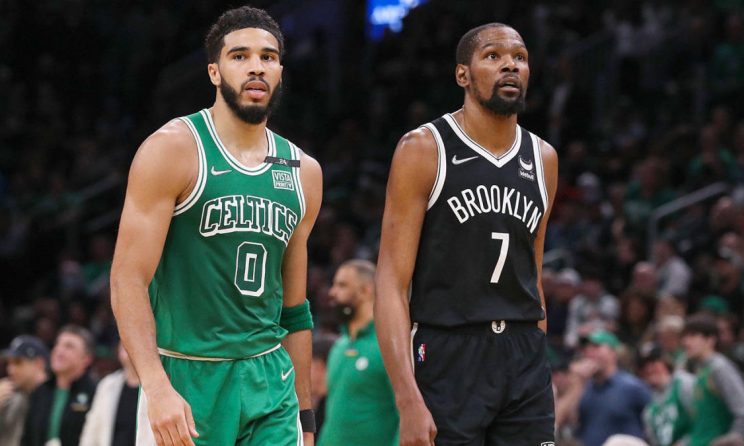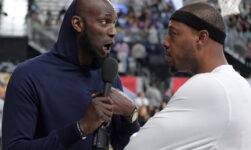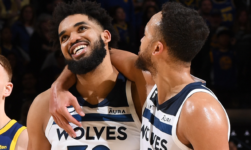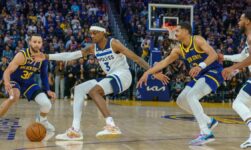
It will be a rematch, technically, when the Boston Celtics and Brooklyn Nets open their first-round series at TD Garden on Sunday, but this is nothing like last season. Some of the strategic stuff is the same, I guess — both teams like to switch, both want to limit the other team’s easy stuff — but Boston now has the best defense in the NBA (but is missing a major piece of it, for now), Brooklyn has a new Big 3 (but is missing the new guy, for now) and the Celtics’ new coach was on the Nets’ staff last time.
In-season roster changes mean that only one of the regular-season matchups is relevant: A 126-120 Boston win on March 6, in which Jayson Tatum exploded for 54 points. It’s worth noting that Robert Williams III, who will miss at least the beginning of this series with a knee injury, played 37 minutes that afternoon, and LaMarcus Aldridge, who was not in the Nets’ rotation at the end of the regular season and didn’t appear in their play-in game, played 23 minutes.
Without Williams, is the Celtics’ switch-heavy defense more vulnerable against Kevin Durant and Kyrie Irving’s isolations? Probably, but their defense is still excellent. Without Ben Simmons, is Brooklyn simply too small to deal with Boston’s wings? Maybe, but Simmons could come back. Would this be an amazing conference finals matchup if both teams were whole? Absolutely. But here we are.
Please check the opt-in box to acknowledge that you would like to subscribe.
Thanks for signing up!
Keep an eye on your inbox.
Sorry!
There was an error processing your subscription.
Boston Celtics (2) vs. Brooklyn Nets (7)
Boston leads series 2-0
All times Eastern
Game 1 (at BOS): Celtics 115, Nets 114
Game 2: Celtics 114, Nets 107
Game 3 (at BKN): Saturday, April 23 | TBD | TV: ESPN
Game 4 (at BKN): Monday, April 25 | TBD | TV: TBD
Game 5* (at BOS): Wednesday, April 27 | TBD | TV: TBD
Game 6* (at BKN): Friday, April 29 | TBD | TV: TBD
Game 7* (at BOS): Sunday, May 1 | TBD | TV: TBD
*If necessary
Featured Game | Brooklyn Nets vs. Boston Celtics
1. It’s matchup-hunting season
Both of these teams like to switch, but the Celtics do it more often and more effectively. When Brooklyn goes matchup hunting, it might not get the matchup it wants. Boston pre-switches to keep its best defenders on opposing stars, and it scrams its smaller defenders out of post-ups. The Celtics want to force the Nets into “one-on-one” basketball, but it’s not really one-on-one — help defenders with long arms will be in the gaps, trying to force Durant and Irving into contested jumpers. The danger is that Durant and Irving have won plenty of games by making contested jumpers.
“It’s a contrast of two things that two teams do extremely well,” Boston coach Ime Udoka said.
How Brooklyn handles the switching will determine how much help the Celtics decide to send. Nets coach Steve Nash said he wants the Nets to “have some discipline to continue to play and not just settle for isolation situations,” i.e. ignore the switches, keep running actions, slip out of screens, try to make Boston make mistakes. The Celtics typically don’t make many mistakes, but they’re more costly without Williams around to clean them up.
Bruce Brown made headlines when he said that Brooklyn would go at Boston’s bigs, but no one cared when Udoka said the Celtics would pick on the Nets’ guards: “With their lineups that they’re starting, they’re playing much smaller at times with [Patty] Mills and [Seth] Curry, Irving, [Goran] Dragic and those guys out there sometimes. There’s some advantageous positions for us with our size and versatility. So, things you can attack there.”
Brooklyn’s starting backcourt — Irving and Curry — is unusually small, and Nash has at times played three of those guards together. The Celtics are comparatively enormous, and the Nets will have a harder time avoiding mismatches. In theory, though, the strategy is the same: If you can’t prevent a mismatch, then it’s about reacting to it with help defense and double-teams. When it comes to slowing down Tatum, though, that stuff is much less effective than it used to be.
2. Brooklyn on the boards
Their backcourt is tiny, but the Nets are not exactly a small team. The roster is full of big men, and in that game in March, they rebounded a third of their misses, which is not an unusual occurrence. With starting center Andre Drummond on the floor, Brooklyn had a 34.7 percent offensive rebounding percentage. (The Memphis Grizzlies rebounded a league-best 33.8 percent of their misses this season.)
Boston is a middle-of-the-pack defensive rebounding team, but this is one of the risks of switching everything. If Al Horford or Daniel Theis is guarding Irving on the perimeter, it will be harder to keep Drummond and backup center Nicolas Claxton off the glass. Along with open looks for the Nets’ shooters and “Bruce Brown’s energy,” Udoka mentioned “second-chance points by Drummond and Claxton” as an area of concern.
Unlike Drummond, Claxton is not one of the best offensive rebounders of all-time. He has improved when it comes to rebounding in traffic, though, and he has added some of what he calls “grown-man strength.”
If Marcus Smart and Derrick White can box Claxton out, then it’ll be more difficult for him to stay on the floor. If he helps Brooklyn on the boards, though, then he could steal some of Drummond’s minutes — and maybe even the starting spot. One day, Claxton might be the Nets’ version of Williams. Right now, he provides more defensive versatility and vertical spacing than their other options at center.
3. The race against time
Until Simmons is available, Brooklyn is far less versatile than Boston. Rookie forward Kessler Edwards, the No. 44 pick in the draft, is an X-factor because, without Joe Harris, the Nets don’t have anyone else who resembles a 3-and-D wing. They had to waive James Johnson in order to convert Edwards’ two-way contract to a standard one, and they have to hope that Edwards’ uninspiring eight minutes in the play-in game were not a sign of things to come. If Brooklyn decides it needs more size to deal with Tatum and Jaylen Brown, he is the guy.
The presence of Simmons would not fill the hole on the wing, but it would make it less important. He would immediately improve their defense, transition game and rebounding, and he’d give Nash more lineup flexibility, if only for 10 to 15 minutes a game at first. The problem is that the Nets might be in a desperate situation by the time Simmons is ready to play. The Celtics might have Time Lord back by then, too.
No one in Brooklyn is publicly putting pressure on Simmons with words. There is really only one way, though, for his teammates to take the pressure off: Prove that they don’t need Simmons to save them. Taking one of the first two on the road would be a good start.






